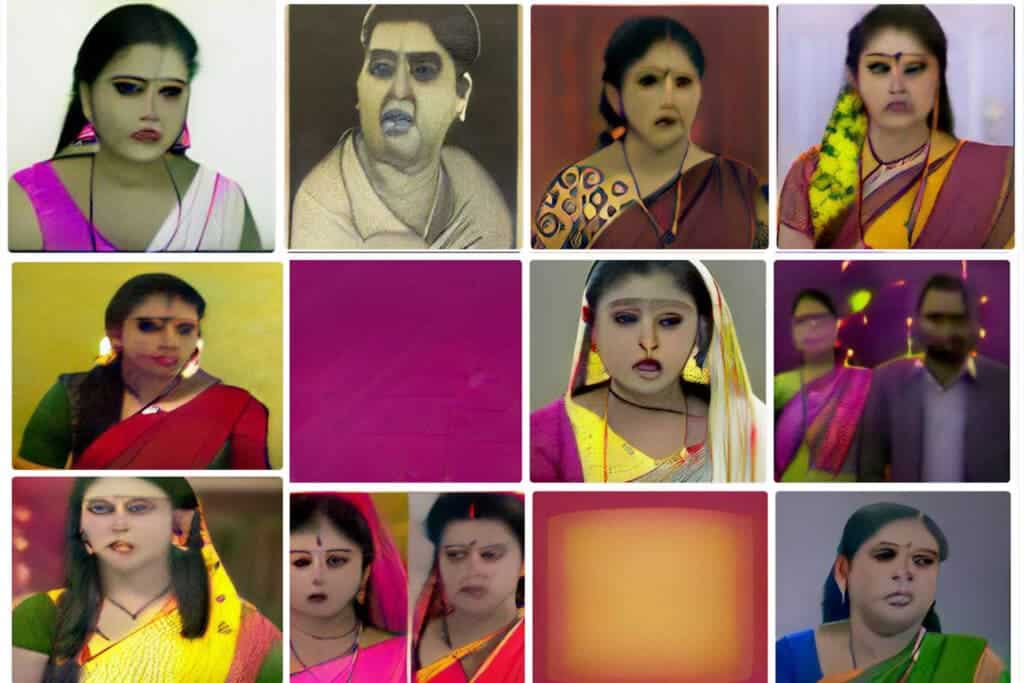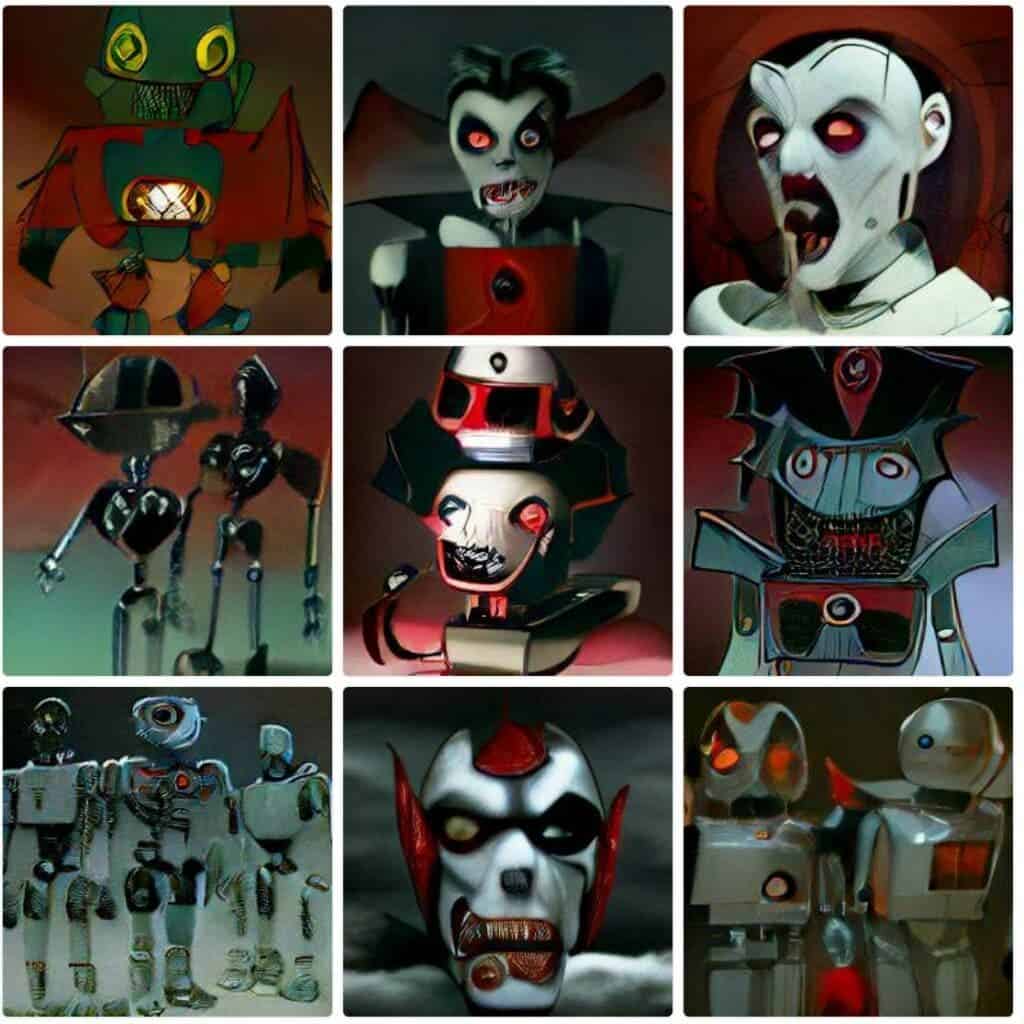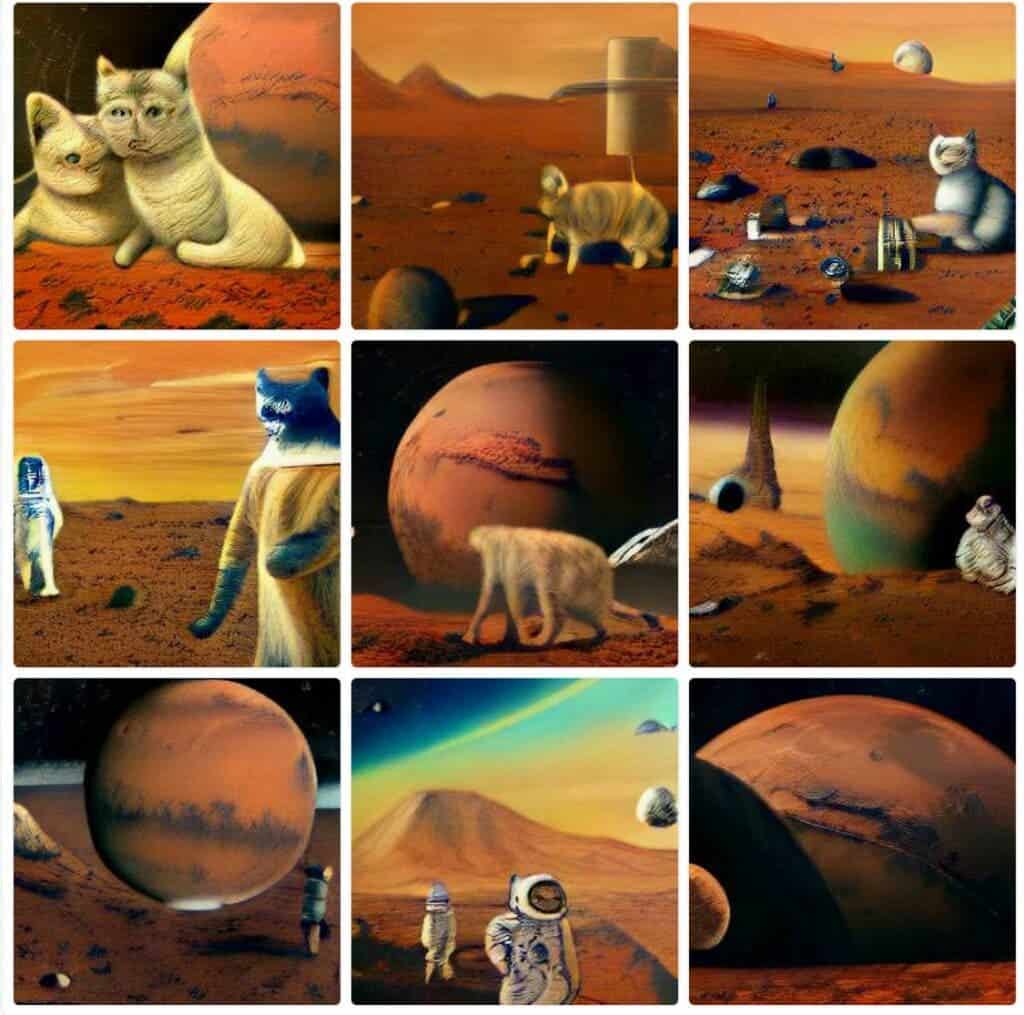DALL-E mini is a free-to-use AI-based program that can generate original images and illustrations from an input text. It’s not perfect, especially with faces or details, but it’s still remarkably good. But it also does something weird.
Some users recently noticed that when the program is run without giving any prompt, most of the pictures it produces are of women in saris (traditional women’s wear in India and Nepal). This peculiar behavior of DALL-E mini has bewildered AI experts — including its creator.

Since its release in July 2021, DALL-E mini has been creating images from text prompts and constantly improving its result. Machine learning engineer Boris Dayma created this online project as an open-source alternative to DALL.E 2, an OpenAI program that functions in the same way as DALL-E mini but is more potent and can only be accessed by a few researchers. OpenAI is a research organization founded by Elon Musk (he has left the project) and Sam Altman (current CEO) that focuses on machine learning-based innovations (DALL E mini is not associated with or owned by Open AI).
Although most of the images produced by this creative artificial intelligence come with blurred and distorted sections or significant imperfections, DALL-E mini can produce images for the weirdest thoughts that pop into your mind. From vampire robots to flying cities and kittens doing yoga in the Himalayas, any input you enter, DALL E mini will images for that. But why does it shows women in saris when a user runs it without an input text?

The no prompt test with DALL E mini
The sari obsession of DALL E mini was first reported by Brazilian screenwriter and ex-hacktivist Fernando Marés in June 2022. Marés has been experimenting with the inputs of DALL E mini for some time and then he thought about testing the program without giving any prompt. After running some blank queries, he came across a strange finding.
Marés noticed that during each test, the results included at least one image of a woman in a sari. Since he had run only a few tests, he thought this could be a weird coincidence. So to further confirm the woman in sari obsession with the AI, Marés decided to run more tests. He claims that he and his friends ran blank queries on DALL E mini numerous times for about 10 hours and generated 5,000 original images using the same AI program.
Surprisingly, a large number of the images created by DALL E mini during the blank input tests were of women in saris. Sari is a dress mainly worn by Hindu women in South Asian countries like India, Nepal, and Sri Lanka, and it is considered a symbol of purity, national pride, and culture in many of these nations. Moreover, saris made using the traditional hand-weaving methods have economic importance as well because they serve as a primary source of income for millions of handloom weavers in India alone.
But the big question is what an AI has to do with women in saris? When this question was asked to DALL E mini’s creator, Dayma, he told Rest of World that even he was baffled:
“It’s quite interesting and I’m not sure why it happens. It’s also possible that this type of image was highly represented in the dataset, maybe also with short captions.”

Apart from the dataset and caption-related reasons another factor that could affect DALL E mini’s results is its data filter training. Some AI experts suggest that it is possible the images of sari women have remained unlabeled during the training of the DALL E mini model. So when a blank input test is run, the AI selects the unlabeled images and data and processes the same to give women in sari images (DALL E mini creates images by processing millions of already available captions and images on the internet).
However, not all machine learning experts agree with these explanations. Michael Cook, an AI researcher from London’s Queen Mary University argues that the AI dataset, in general, is not likely to include more images of people from South Asia or the images that have captions in a language other than English. Many of the women in sari images on the internet have captions not in English but in Hindi.
He believes that the frequent appearance of sari images could be linked to how the data is filtered but this is also just a theory.
“What we might be seeing is a weird side effect of some of this filtering or pre-processing, where images of Indian women, for example, are less likely to get filtered by the ban list, or the text describing the images is removed and they’re added to the dataset with no labels attached,” said Cook.
DALL E mini is turning into an internet sensation
Since its release DALL E mini is attracting new users every day. It has given rise to many Twitter handles having more than half a million followers, for example, the Twitter account named Weird Dall-E Mini Generations currently have 987.5 K follower. The popularity of the AI program can be imagined from the fact that it processes nearly 5 million inputs on a daily basis.


Anyone can generate images using DALL E mini (official website name is huggingface.co), all you need to do is type an input (say “a painting of cat civilization on Mars”) and click the ‘Run’ button. Within a couple of minutes, original images are presented before you. However, this powerful ability of DALL E mini is also being considered a threat to human artists such as illustrators, painters, and graphic designers.
It would be very interesting to see what further development AIs like DALL E mini go through in the coming years and how those changes affect human lives.


